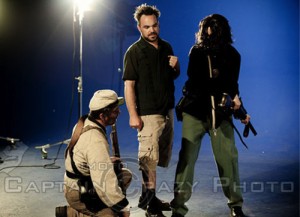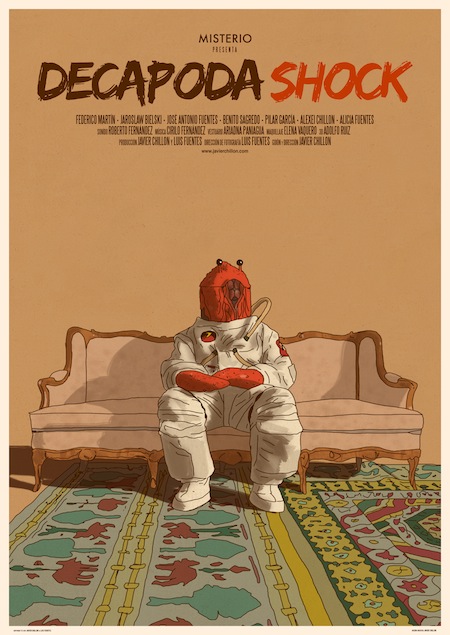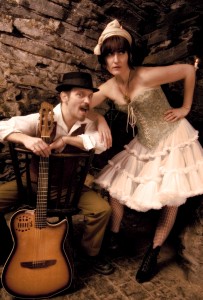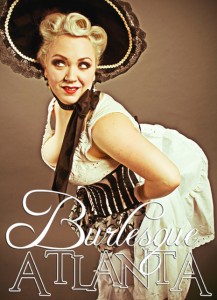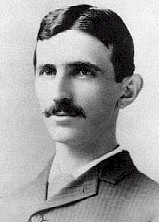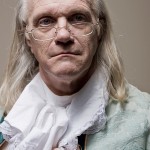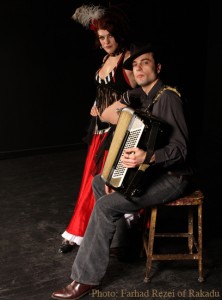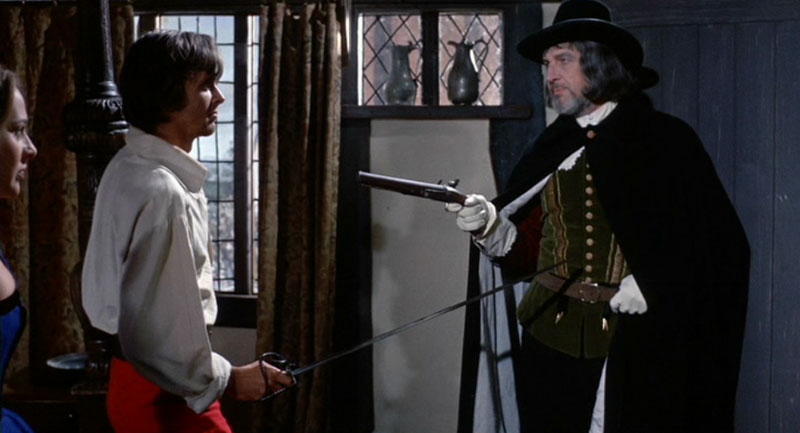by Melanie Crew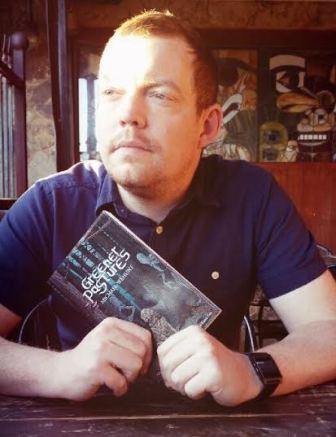
Managing Editor
Catch up with our Kool Kat of the Week, Michael Wehunt, and a plethora of other Weird and speculative fiction writers at the inaugural The Outer Dark Symposium on the Greater Weird, crash-landing at Decatur CoWorks on Saturday, March 25, and proudly sponsored by ATLRetro. And eat, drink and exchange oddities with the writers during The Outer Dark Symposium Pre-Party at My Parents’ Basement, Friday, March 24, 8-11 pm, where you also can gather ‘round for readings by Michael Wehunt, our own publisher and bloggeress in charge Anya Martin (“The Un-Bride or No Gods & Marxists,” Eternal Frankenstein) and Selena Chambers (World Fantasy Award nominee for “The Neurastheniac,” Cassilda’s Song).
The Outer Dark Symposium is brought to you by The Outer Dark podcast and its host This Is Horror! and features eight hours of panels, readings and signings centered around Weird and speculative fiction. Admission will be limited to 50 attendees, but all programming will be featured on The Outer Dark. Other confirmed guests include Daniel Braum (Night Marchers and Other Strange Tales), Gerald Coleman (When Night Falls: Book One of The Three Gifts), Milton Davis (From Here to Timbuktu), Kristi DeMeester (read her ATLRetro feature here where she discusses her upcoming novel Beneath), John C. Foster (Mister White), Craig L. Gidney (Sea, Swallow Me and Other Stories), Orrin Grey (Painted Monsters and Other Strange Beasts), Valjeanne Jeffers (Immortal), Nicole Givens Kurtz (The Cybil Lewis Series), Edward Austin Hall (co-editor of Mothership: Tales from Afrofuturism and Beyond), Scott Nicolay (World Fantasy Award winner for “Do You Like To Look At Monsters?”), Kool Kat Balogun Ojetade (The Chronicles of Harriet Tubman: Freedonia), Eric Schaller (Meet Me in the Middle of the Air), Grafton Tanner (Babbling Corpse: Vaporwave and the Commodification of Ghosts), and Damien Angelica Walters (Sing Me Your Scars).
Wehunt, a transplant from North Georgia (just a stone’s throw from the Appalachians), has set up roots in the lovely urban weirdness that is Atlanta. His short fiction has appeared in Cemetery Dance, The Dark, The Mammoth Book of Cthulhu: New Lovecraftian Fiction, The Year’s Best Dark Fantasy & Horror, and Year’s Best Weird Fiction, among others. His debut fiction collection, Greener Pastures, was published in 2016, and he’s currently working on his first novel, which is sure to please the maniacal masses. ATLRetro caught up with Wehunt for a quick rundown on what inspires him to put pen to paper, his admiration for the truly bizarre and why you should always follow your dreams, no matter how weird.
ATLRETRO: It’s the usual state of things for a writer, or any artist to be honest, to be pigeonholed into clear-cut tried-and-true genres. Your work has been described as horror, weird horror, sci-fi, all wrapped up in a bizarre Southern Gothic blanket filled with the strange and bizarre. What are the pros and cons of being classified in such a way? And do you feel it’s better to not quite fit in any specific genre?
Michael Wehunt: I definitely prefer not fitting into any one tidy box. It really depends on an author’s ultimate goal, however. Sometimes the best way to make a name for oneself and become commercially successful—often a pipe dream, but what else are dreams for?— is to willingly climb into that single genre box. Your brand, so to speak, can be conveniently labeled. In my opinion, the label on the box is for the readers, not the author. But mixing genres is wonderful, too, and can have its own rewards. I likely won’t ever be a chameleon type of writer, using a wholly different form each time out. Instead, I’m more focused on that section of the Venn diagram where all these different areas overlap and exploring what’s there. The convergence could be subtle here or it could be stark there. Ultimately, these elements all serve the same purpose.
We see that you’ve had a long (and hopefully torrid!) love affair with Flannery O’Connor, the mother of grotesque discomfort. What is it about her tales and her writing that inspires you the most?
Flannery O’Connor was my third literary love. I discovered Stephen King when I was 8 years old, then Poe shortly after. It wasn’t until early in high school that I was introduced to O’Connor—and later still to Southern Gothic in general— and all these years later I’ve yet to read an author who could find that seam between ugliness and transcendence so perfectly. There are other authors who write beautifully in a Southern voice—Carson McCullers!— but none like she did. She mined the deep-running spiritual power of the South and smelted it with the grotesquery of petty humanness, and horror, black humor, and great beauty emerged in her work. Much later—only a handful of years ago, in fact—I would immerse myself in weird fiction and discover another love of my life. Robert Aickman and Algernon Blackwood, alongside contemporary authors such as Lynda E. Rucker and Laird Barron, showed me that O’Connor had been frequently writing a sort of weird fiction, though she was never credited with such. The only difference was that the spirituality in her work was the sort that America embraces, and it was all the more powerful to show what was under its rock while still remaining devout. The same cosmic strangeness is often right there in her books—why would we think our minds can fathom God with a capital G, after all—and this only deepened my love for her…and, yes, made it more torrid.
 Stereotypically, the south, or “southerners” to be exact, is known the world over for its ability to bury deep dark secrets while flaunting its ignorance with a discomforting ease. How important would you say is the written word when it comes to exposing societal atrocities and do you think it is a writer’s duty to bring about change through their published works?
Stereotypically, the south, or “southerners” to be exact, is known the world over for its ability to bury deep dark secrets while flaunting its ignorance with a discomforting ease. How important would you say is the written word when it comes to exposing societal atrocities and do you think it is a writer’s duty to bring about change through their published works?
The South has a large closet filled with skeletons, to be sure, and the metaphor is uglier than it would be in most other cases. Not only have slavery and the foul mistreatment of Native Americans been largely papered over in our history books—not ignored, of course, but spruced up to look less unattractive—but poverty and the machine that perpetuates poverty bring out the worst in people sometimes, and a fierce sense of piety and Southern pride can sweep these things under the rug with a defiant pride. The word “demure” comes to mind. That rug has been peeled back even more in recent years. Not just in the rural South but in other analogous areas of the country. And things are squirming in the light. Fiction can be escapism, pure and simple. It can be socio-political in a direct way or in an indirect way. It can focus on philosophy and ideas. It can examine what it means to be human, with all a human’s transcendence and trappings. It can be one of these things or it can be all of these things at the same time. The best of it makes you think about the world without really letting you know it’s doing so, and in that way, change can come simply by engaging the reader with the self and then with the world around them. I know that much of my worldview (and self-view) came from reading dark fiction, and it’s no coincidence that compassion and kindness are the things I seek out in a political candidate or organization or friend.
Your debut collection, GREENER PASTURES, was published in 2016. Can you tell our readers a little about the collection and what inspired you to put together these particular tales in one grouping?
Greener Pastures contains 11 of my favorite short stories as of late 2015; those I felt worked the best together to carry a general theme while also providing just enough variety in subject matter and tone. When they were all together, I realized how prominently trees figure into my work, something I’d never truly noticed before. They’re everywhere, either in the foreground or background, but this was mostly accidental. Less accidental was the theme of loss. There are a lot of stories here that deal with various shades and types of loss, and how people cope with it. Write what you fear, they say, and that’s exactly what I fear. But I wanted a variety of moods and voices to bear these losses and keep things interesting for the reader. And, of course, a variety of darkness, including some good old-fashioned terror. In the end, I would say most of these stories speak from and of the human heart. There’s nothing suppler and earthier than humanity. I plan to dig in that dirt as long as people will let me. I’ll do my best to scare and unsettle them while  I’m at it.
I’m at it.
We’re also excited to see that your story, “October Film Haunt: Under the House” is featured in THE YEAR’S BEST DARK FANTASY & HORROR 2017 collection. Can you tell us a little about what inspired you to write this story and what it means to you to be a part of this collection?
Thank you! This will be my second time in Paula Guran’s yearly best-of-the-dark-stuff anthology, and I feel very grateful and fortunate for that. “October Film Haunt: Under the House” is an interesting and special story for me. It has two origins: The first is that I wanted to write a love letter of sorts to horror and weird fiction fandom. Four guys from different walks of life who met at a fan convention and found a common passion for horror films take a road trip once a year to the setting of a famous scary movie, documenting their findings and sensations. Since I’m a sucker for the found-footage genre of horror (à la THE BLAIR WITCH PROJECT), I wanted to try my hand at translating this medium into the written word, only switching into video camera mode when the story earned it. But I also wrote it specifically as a reaction to the majority of my work dealing with, as alluded to above, emotion, grief, and the joys and pains of being a regular person. I wanted no complex back-story, no real character development…just pure, unadulterated terror and craziness. It was a lot of fun to write, and I think it really did turn out to be a love letter.
You’ve made it very clear that “flesh and blood” characters are of utmost importance in your writing. What do you mean when say you write these types of characters and why are they important to you and your writing?
It’s crucial to have relatable characters that the reader—and the author—can easily imagine off the page. Even in the story I just discussed, “October Film Haunt,” in which I consciously stayed away from the importance of character arcs, the reader still has to care about the characters, what they do, and what they gain or lose. Antagonists, antiheroes and even the henchmen who die in the second scene should feel like real people…except, since this is horror we’re talking about, when they’re not actually people at all. When a story focuses on character and seeks a “depth,” that flesh and blood is all the more important. There’s no point in hanging curtains if there’s no window.
Short fiction and short fiction collections seem to be taking the stage and leading the charge, especially within the realm of Weird fiction. What do you think is it about the short story or novella that draws the Weird writing crowd?
Since Weird fiction relies primarily on the unknown intruding upon the known world—to simplify things—it can be difficult to sustain that sense of uncanny dread across the length of, say, a 90,000-word novel. Ambiguity is often the bread and butter of the Weird; that sense of awe and uncertainty is important to carry the fiction’s effect beyond reading. This isn’t to say there are no Weird fiction novels. It’s just that the ratio is skewed more toward its  effectiveness as a short form. Horror typically works better than Weird fiction in novel form because its monsters are most often explained. There’s a clear path and intent: figure out the monster so that you can survive it. In Weird fiction, the “monster” is sometimes so inscrutable and vast (the universe itself or something so alien that the human mind can’t truly process it) that over the course of a novel, it becomes difficult to get away with that inscrutability. I also feel that short fiction is making a comeback in its own right, which is a wonderful thing. The novel is important, but there’s absolutely no reason for it to claim such a vast majority of the reading public. Short fiction can paint moods and tones and use forms and structures the novel simply cannot.
effectiveness as a short form. Horror typically works better than Weird fiction in novel form because its monsters are most often explained. There’s a clear path and intent: figure out the monster so that you can survive it. In Weird fiction, the “monster” is sometimes so inscrutable and vast (the universe itself or something so alien that the human mind can’t truly process it) that over the course of a novel, it becomes difficult to get away with that inscrutability. I also feel that short fiction is making a comeback in its own right, which is a wonderful thing. The novel is important, but there’s absolutely no reason for it to claim such a vast majority of the reading public. Short fiction can paint moods and tones and use forms and structures the novel simply cannot.
Speaking of the Weird writing crowd, you are scheduled to be a guest at the inaugural The Outer Dark Symposium on the Greater Weird this weekend (March 25). Anything special planned for this event?
My plans are essentially the same as with any other convention: go and have fun. We’re having a dinner with readings the night before the Symposium. It’s at 8:00 p.m. at My Parents’ Basement in Decatur, and though there is limited seating, it’s open to the public. And we are looking for weird and creepy things to do on Sunday, too, before everyone ships out. The best part of any convention is meeting and hanging out with people I usually only know on social media. They’re like family.
Any interesting stories on how you discovered Weird fiction and what specifically drew you to this particular group of writers?
It’s interesting to me—and a little embarrassing—how late I came to Weird fiction. I read horror as a kid but for some reason never explored it much beyond Stephen King. I have no idea how different I would have turned out if I’d stuck with it beyond my teenage years. But the darkness never left. I found it in other things. And when I finally, too many years later, decided I couldn’t put off trying to write fiction anymore, I reread some Stephen King stories and bought a copy of Ellen Datlow’s Best Horror of the Year, Volume Three just based on Amazon browsing. The latter book was a revelation to me. I discovered Laird Barron, John Langan, Tanith Lee, Stephen Graham Jones…it was a door opening, and soon I was an addict. These people thought about fiction the way I did, and I had no idea! I wrote my first story soon thereafter, and ever since I’ve been trying to pretend I knew about this stuff all along, even after admitting in interviews that I didn’t.
Do you have any advice for those writers just starting out?
There’s a post on my blog called “On Turning Five.” I wrote it last year to share my thoughts about what I felt was the first chapter in my career. It goes into more detail than I can here, but I shared six bullet points that I think are important for a beginning writer: talent (you gotta have some of that); time (use what you have and don’t worry if others have more of it); wisdom (rely on your own, seek others’); kindness (support other authors, pay it forward); persistence (keep doing it, keep fueling the fire of your passion to write in any way you can think of); and resiliency (there will be a lot of rejection—it’s as important a part of the reality as success is).
 Can you fill us in on what you’re currently working on? And where can our readers get their hands on your published works?
Can you fill us in on what you’re currently working on? And where can our readers get their hands on your published works?
I’m currently in the middle of my first novel. There’s some weird fiction, some horror, some literary sensibilities, and some ore from other mines. I have that Venn diagram taped over my desk with a thumbtack pressed into the center. As for my published works, my novella, “The Tired Sounds, A Wake,” has sold out forever, sadly, as it was a limited-edition pressing, though it will live again down the road in my next collection. Greener Pastures is available through Apex Book Company or Amazon and other online retailers. My blog has links to all my stories that aren’t in the collection as well.
Can you give us five things you’re into at the moment that we should be reading, watching or listening to right now—past or present, well-known or obscure?
Reading: Julian Barnes’ novel The Sense of an Ending. I’m reading it for the third time right now. It’s a very short literary novel that takes an uncomfortable look at memory and its reliability, both intentional and unintentional. Beautiful and unsettling. There’s a film version coming out soon, so now would be a good time to discover the book. Watching: I’m terribly behind on films. These days my partner and I are watching The Golden Girls in its entirety, and I’ve been having fun reliving my childhood—it was the last show my grandmother and I watched regularly together— and coming up with fake occult theories about Sophia and the girls. Listening: Mica Levi’s film scores. I listen to a lot of ambient, drone, and classical, and Levi’s work for recent films is wonderful to write to. UNDER THE SKIN and JACKIE are both great and very different from each other.
And last, but not least, care to share anything weird and bizarre we don’t know about you already?
This isn’t particularly weird, but I used to have a fairly profound fear of public speaking. For some reason, back in 2010 I got it into my head that I wanted to try amateur standup comedy, which is pretty much the opposite of what I do now. I did it three open-mic performances. It was utterly terrifying but fun—I can clearly remember the swelling panic in my chest—and I’m convinced it was the first step toward writing fiction, which was my other big fear. And while I still have that old fear of public performance in me, it did wonders for it, and it made me an advocate for those scared to put themselves out there: Just do it. Follow your dreams no matter what shape they ultimately take. You’ll be glad you did.
ATLRetro is proud to be a sponsor of The Outer Dark Symposium on the Greater Weird on Saturday March 25. Attending memberships to the symposium are $25 and limited to 50. A few are still available at press-time. Contact atlretro@gmail.com. There’s also a pre-party with author readings on Friday March 24 at My Parents’ Basement in Avondale Estates from 8-11 pm.

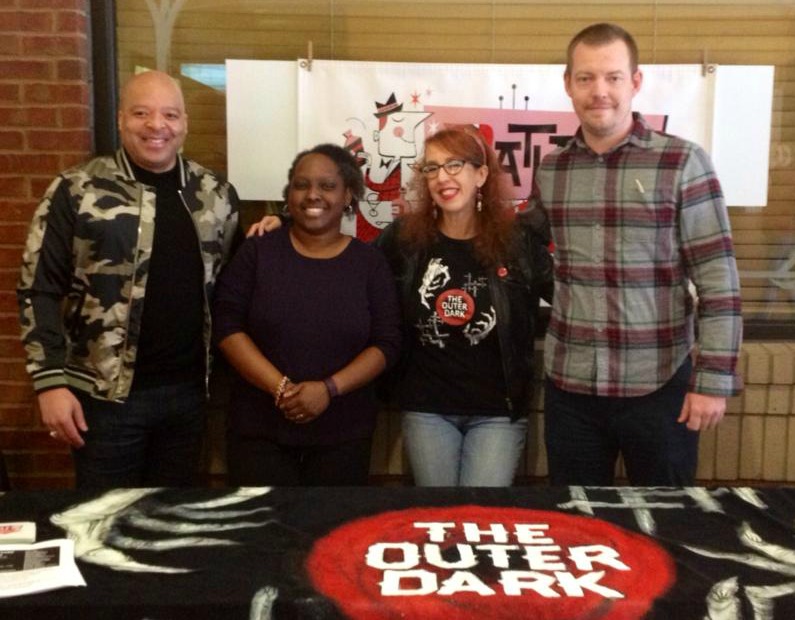

 Universe.
Universe.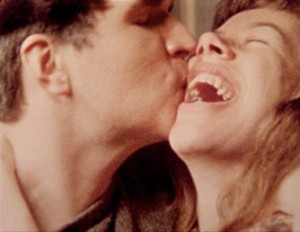
 and sent him a letter, so he called me up and said he loved me and to come and visit him. It was about six weeks later that we married.
and sent him a letter, so he called me up and said he loved me and to come and visit him. It was about six weeks later that we married. language first and English as a second language. In my early 20s, I wanted to write a dog dictionary. Years later, three people told me about the time when they lived “way up the road beyond where the snowplow went across a winter and they watched a wolf and his mates.” I was very charmed by this story, but couldn’t figure how to present it. I finally realized that I could write it from the viewpoint of the wolf. But even then, people would read it and still they wouldn’t learn the language. So I added notes, talked about why the animal made that gesture, what it meant. To me it seemed obvious as pie. So that’s WOLF DICTIONARY. It’s a key to start understanding animals and what they are communicating.
language first and English as a second language. In my early 20s, I wanted to write a dog dictionary. Years later, three people told me about the time when they lived “way up the road beyond where the snowplow went across a winter and they watched a wolf and his mates.” I was very charmed by this story, but couldn’t figure how to present it. I finally realized that I could write it from the viewpoint of the wolf. But even then, people would read it and still they wouldn’t learn the language. So I added notes, talked about why the animal made that gesture, what it meant. To me it seemed obvious as pie. So that’s WOLF DICTIONARY. It’s a key to start understanding animals and what they are communicating. Which writers (poets, novelists, etc.) influenced you the most?
Which writers (poets, novelists, etc.) influenced you the most? be properly tucked away into a single box? Or do you think most art (including film) overlaps several different genres?
be properly tucked away into a single box? Or do you think most art (including film) overlaps several different genres? They can expect to be surprised about a number of things.
They can expect to be surprised about a number of things.











